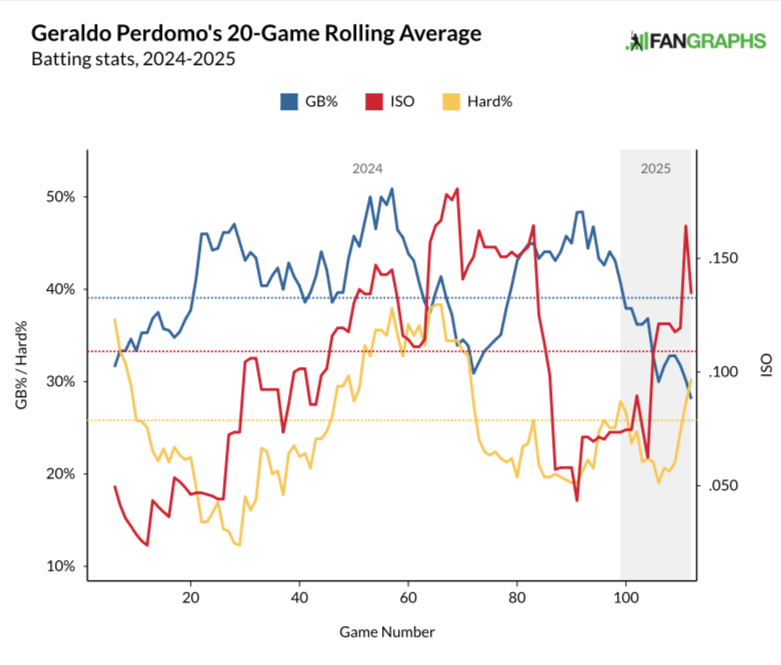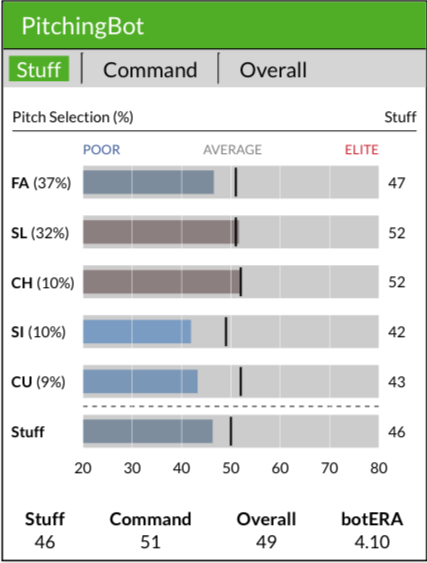Michael's fantasy baseball waiver wire analysis for Week 3 (2025), and whether to buy into MLB hitters and pitchers such as Zac Veen and Mitch Keller. Should you avoid these popular names?
We are just over two weeks into the major league season, and injuries have started to hit. Here’s just a smattering of major contributors lost in the last week or so: Matt McLain, Masyn Winn, Jackson Merrill, Wyatt Langford, Justin Steele, and Zach Eflin. We could go on.
Fantasy managers will be searching for answers, especially at the middle infield, outfield, and starting pitcher positions. It’s still early enough to dream of solutions that will fix everything, and if we get delirious enough, we may even improve our lot over what we’d get from the players we drafted.
That’s where this article comes in. We’re the friend who advises caution before rushing into a relationship with that flashy but slightly flawed person. Below, we analyze three players who may tempt managers to overextend themselves. To the names!
Be sure to check all of our fantasy baseball lineup tools and resources:- Fantasy baseball trade analyzer
- BvP matchups data (Batter vs. Pitcher)
- PvB matchups data (Pitcher vs. Batter)
- Who should I start? Fantasy baseball comparisons
- Daily MLB starting lineups
- Fantasy baseball closer depth charts
- Fantasy Baseball live scoreboard
- Fantasy baseball injury reports
Geraldo Perdomo, SS, Arizona Diamondbacks
30% Rostered
Perdomo has been on an absolute tear to start the season, with two homers, two steals, and a .333/.397/.500 slash at the time of this writing. He’s been batting top two in the D’Backs’ loaded lineup since Ketel Marte went down with a hamstring.
These are positives, but let’s remember: over his prior 833 plate appearances entering this season, Perdomo hit .258 with nine homers and 25 stolen bases. The only standout part of what he’s doing now is the speed, and he may be a plus in average (.273 last season).
But Perdomo’s not doing much different under the hood. His 95 percent zone and 91 percent overall contact rates are up slightly but consistent with prior production. The 4.3 percent barrel and 27.7 percent hard hit rates are nominal bumps from 2024 (3.1% and 26.6%). His average launch angle is up by one percent, although he is hitting the ball in the air more (27 percent grounders versus 41 percent career). However, we are still 30 batted balls away from something like a ground ball rate to stabilize. Most pertinently, we have seen Perdomo perform like this before, if not better:

Perdomo is 25, so one might dream of him growing into more power. But if so, it’s not really showing in his hard contact metrics. The most likely answer is that he’s simply off to a hot start.
We should try to capitalize on Perdomo’s early performance and lineup placement. Just be cognizant that manager Torey Lovullo recently estimated that Marte should return around the end of April. Perdomo will move back down the lineup. We realize he could be a key addition in deep leagues, but in shallow ones, we suggest modest bids for a middle infielder that should primarily provide a solid average with a few steals and runs scored.
Zac Veen, OF, Colorado Rockies
26% Rostered
Veen is sure to be a popular addition, especially in deeper roto or category leagues. We get it: This could be a full-time outfielder with power and speed playing half the time at Coors Field. As previously mentioned, the point of this article is often to throw up a yellow caution flag rather than a stop sign.
First, the good. Veen might be the Rockies’ most exciting position player prospect. He has 70 grade speed and 55/60 raw power. In the minors he has had seasons of 21, 22 and 55 stolen bases. The lower totals were accomplished in less than half a season.
Called up at the beginning of the week, Veen has started every game at right field since. He even led off against righties in recent games and batted ninth versus fellow southpaws.
This raises the first negative: no one can divine what the Rockies will do, or when. Coming out of camp, they earmarked right field for fellow top prospect Jordan Beck, gave him less than 30 plate appearances, and sent him back to the minors. There’s no telling whether they’ll have any more patience with Veen if he doesn’t produce immediately.
So far, he hasn’t produced, batting .125 with six strikeouts in 17 plate appearances (35.1 percent strikeout rate). We mentioned Veen’s power and speed potential, but the hit tool has always lagged behind. He struggled the first couple of times he reached Double-A. Then again, he has also had his career interrupted numerous times by injury (another risk: can he stay healthy?). Veen certainly made his way onto the MLB roster this season with a .387 average and 1.150 OPS in the very limited eight games he played at Triple-A.
We will be bidding on Veen, especially in deeper leagues for teams that need speed. If given the opportunity, he could swipe 30-plus bags. The ATC projections have him for 19 in just 85 games; that comes with a .233 average. In shallow leagues, we would not rush to add him. Just remember, this is the Rockies. There is no guarantee he won’t be back in the minors in a week or two. Bid reasonably.
Mitch Keller, SP, Pittsburgh Pirates
42% Rostered
Keller gets the Nationals next, and he just threw one of his random pristine starts: 7.1 shutout innings, four hits, one walk, and six strikeouts against the Cardinals. After the Washington start this week, he’s lined up for a two-step the following week starting with at the Angels—and ending at the Dodgers.
Here’s the thing. Keller’s ERA after that shutout? 4.24. Exactly in line with the 4.25 he posted in 2024 and the 4.21 in 2023. His 4.04 SIERA is almost identical to last year’s 4.05. Nothing has changed.
In fact, many of Keller’s performance metrics are worse: the 18.7 percent strikeout rate is middling, and his 10.7 percent K-BB rate is alarming (14 percent is the MLB average). Keller’s velocity is down almost a mile an hour, and the machines are not impressed either. His current 97 Stuff+ is a four-year low. FanGraphs’ Bot model doesn’t think he’s making up for it with great command either:

By the Bot’s estimation, Keller is…surprise, surprise, a low-4’s ERA pitcher. This is what’s known as a theme.
Keller has shuffled up his deep pitch mix, throwing his harder slider and changeup more often. He’s getting a little more horizontal movement on the slider and more depth on the changeup, and that slider has a 40.7 percent whiff rate. However, Keller’s fastball and sweeper are getting less swing and miss. Add it all up, and his overall 20.1 percent whiff rate is down from 21.5 last season. That’s the Keller experience: he stops up one hole in the dam, and another opens somewhere else.
Keller is a perfectly cromulent deep league starter, neither good nor bad. He will amass innings such that he could collect double-digit wins. But he will be a roller coaster from game to game and, in the end, give us league average production, and we mean that literally: MLB’s average starting pitcher ERA last year was 4.15. Over his last 548.1 innings pitched, Keller’s ERA is 4.14. That is not a pitcher we need to rush out to add in shallower roto or head-to-head leagues.
Download Our Free News & Alerts Mobile App
Like what you see? Download our updated fantasy baseball app for iPhone and Android with 24x7 player news, injury alerts, sleepers, prospects & more. All free!






 RADIO
RADIO
























